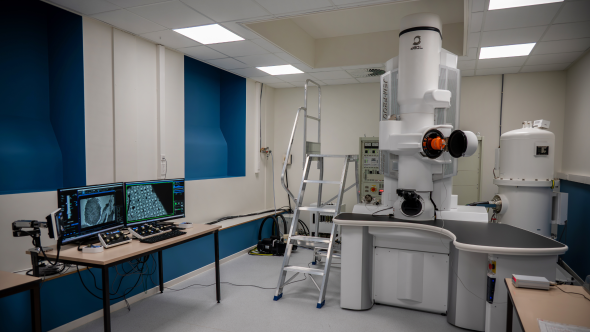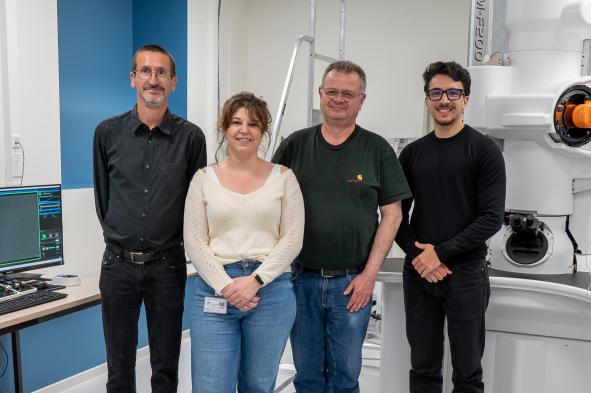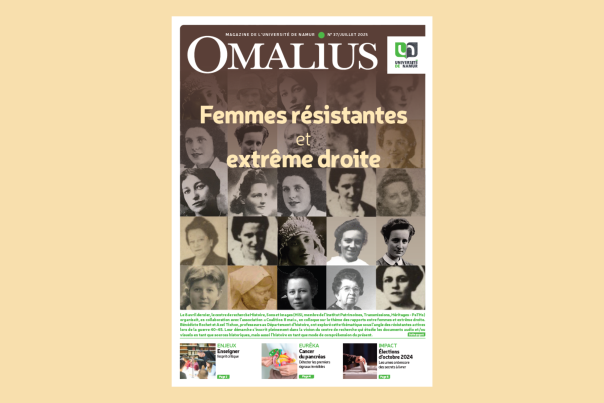Since 1975 and the initial three electron microscopes, two transmission - Philips EM301 and EM201- and one scanning - JEOL JSM-35 - equipped in 1980 with an X-ray analyzer, electron microscopy at UNamur has evolved in step with the microscopes acquired. A new scanning microscope - a Philips XL20 equipped with an X-ray analyzer - replaced the old one in 1991. Then, in 1999, a new transmission microscope was acquired - a Tecnai10 (FEI)- which was the subject of an article in the newspaper "Le Soir".
The article "Images of the infinitely small shown live" states: "It's not every day that the institution equips itself with a new transmission electron microscope, what's more, the first of its generation in Belgium. (...) The big step of this microscope of a new kind? Its image acquisition process. Whereas previously, images observed on film were fixed using a photographic process, it's now a digital camera coupled to a powerful computer that operates".
Professor Yves Poumay, interviewed at the time, explains, "Some researchers from other universities come to us, not because they don't have equivalent equipment at home, but because it's less accessible or less good"". At UNamur, they "not only provide researchers with a microscope, but also a team of laboratory technicians and an accompanying engineer, which constitutes a rather unusual human framework that is as valuable as the new microscope itself."
The platform's philosophy has not changed, with researchers from all walks of life, but also companies, still and always calling on its expertise.
The modernization of equipment continued in the following years with the acquisition of several scanning microscopes a JEOL JSM 7500F equipped with an X-ray analyzer in 2007 and a JEOL JSM 6010LV in 2012. The latter was very recently modified in 2023 with the acquisition of an X-ray analyzer (SDD QUANTAX, Bruker) and a detector for backscattered electron diffraction (eFlash QUANTAX, Bruker) as part of the inter-university research platform for the energy transition (RRF).
In 2016, a Tecnai20 (FEI), equipped with an X-ray analyzer (SDD QUANTAX, Bruker) mounted in 2021, complements the Tecnai10 for transmission microscopy analyses.



